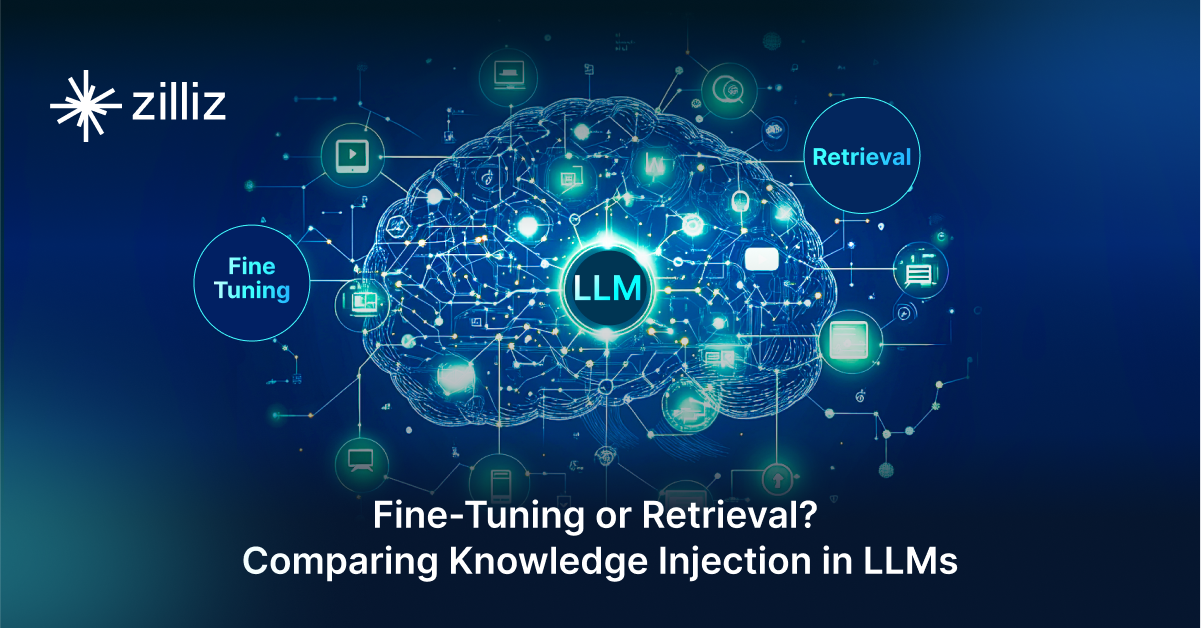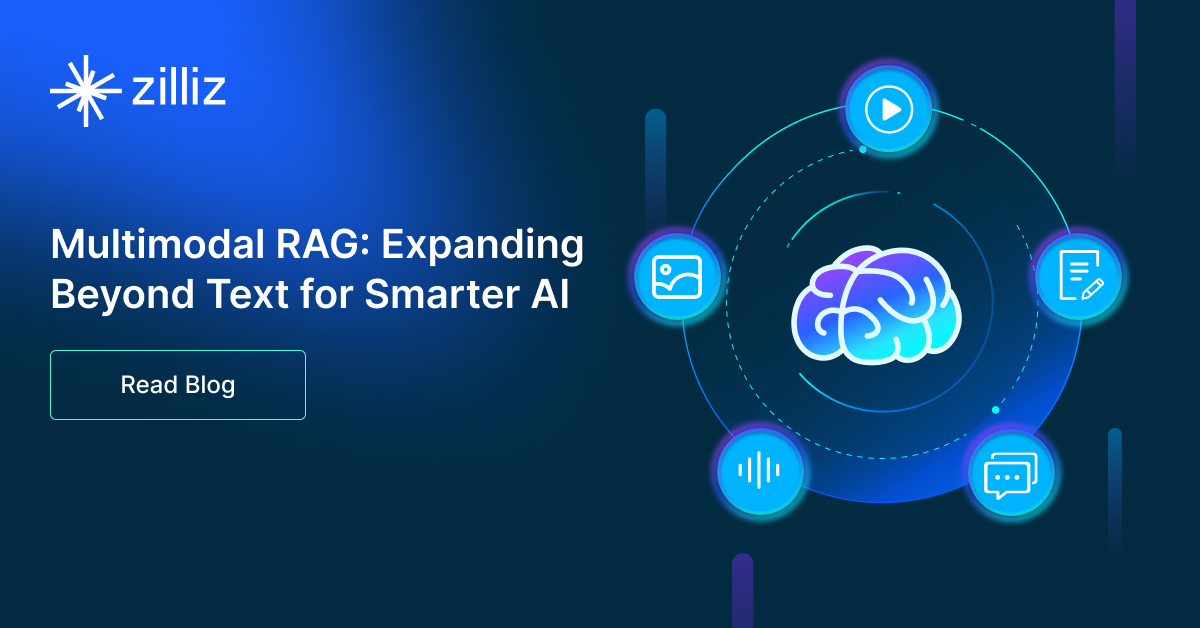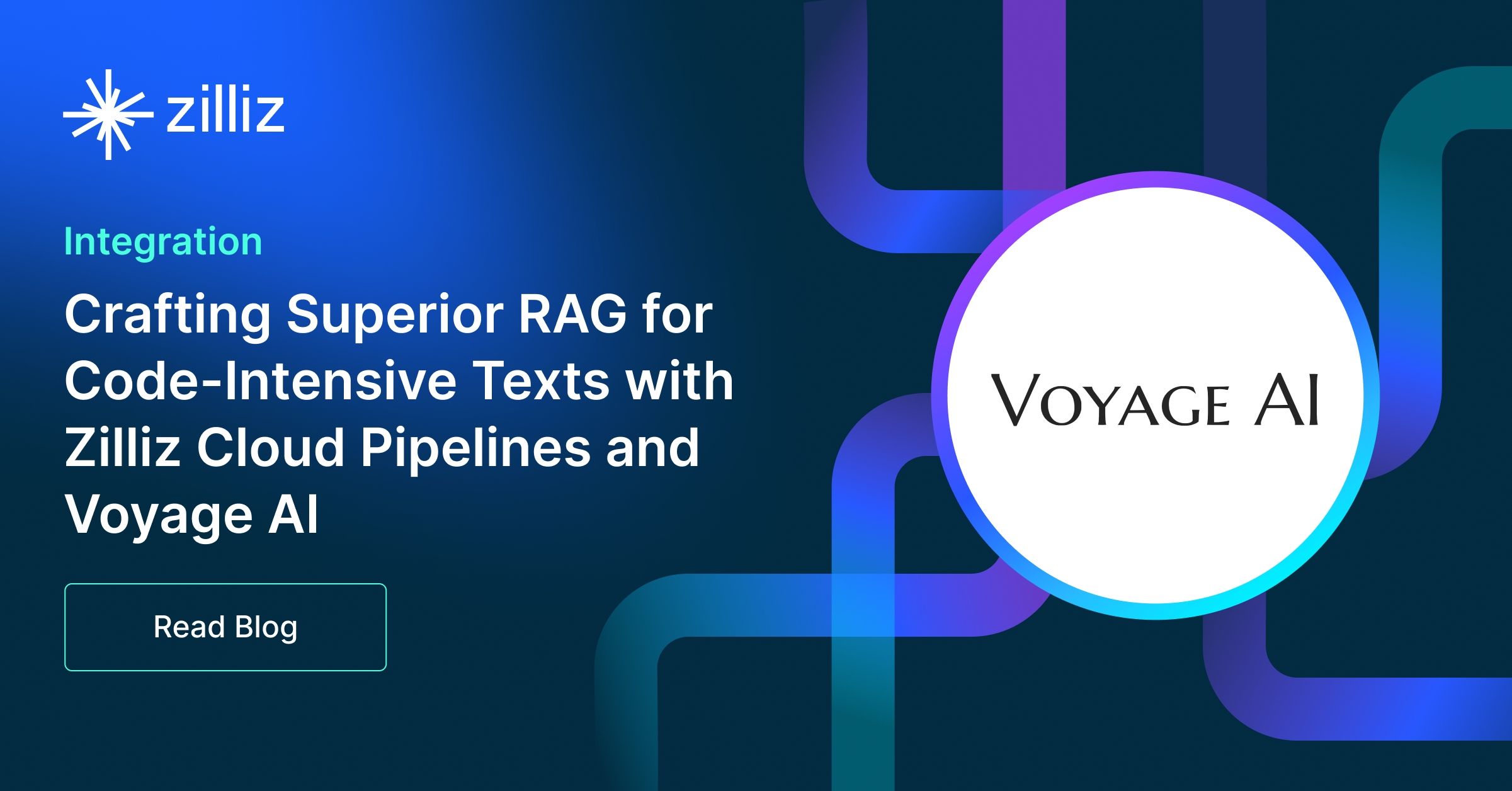Build RAG Chatbot with LangChain, Milvus, Google Vertex AI Claude 3.5 Sonnet, and IBM granite-embedding-107m-multilingual
Introduction to RAG
Retrieval-Augmented Generation (RAG) is a game-changer for GenAI applications, especially in conversational AI. It combines the power of pre-trained large language models (LLMs) like OpenAI’s GPT with external knowledge sources stored in vector databases such as Milvus and Zilliz Cloud, allowing for more accurate, contextually relevant, and up-to-date response generation. A RAG pipeline usually consists of four basic components: a vector database, an embedding model, an LLM, and a framework.
Key Components We'll Use for This RAG Chatbot
This tutorial shows you how to build a simple RAG chatbot in Python using the following components:
- LangChain: An open-source framework that helps you orchestrate the interaction between LLMs, vector stores, embedding models, etc, making it easier to integrate a RAG pipeline.
- Milvus: An open-source vector database optimized to store, index, and search large-scale vector embeddings efficiently, perfect for use cases like RAG, semantic search, and recommender systems. If you hate to manage your own infrastructure, we recommend using Zilliz Cloud, which is a fully managed vector database service built on Milvus and offers a free tier supporting up to 1 million vectors.
- Google Vertex AI Claude 3.5 Sonnet: A refined model within the Claude family, designed for advanced natural language understanding and generation. It balances creativity and coherence, making it well-suited for generating high-quality content, engaging chatbots, and sophisticated text analysis. Its versatility and enhanced capabilities make it ideal for enterprises seeking rich interactive experiences.
- IBM granite-embedding-107m-multilingual: This AI model specializes in generating multilingual embeddings, allowing for semantic understanding across various languages. With 107 million parameters, it excels in tasks such as cross-lingual retrieval, translation, and sentiment analysis, making it ideal for global applications that require nuanced understanding of diverse linguistic contexts.
By the end of this tutorial, you’ll have a functional chatbot capable of answering questions based on a custom knowledge base.
Note: Since we may use proprietary models in our tutorials, make sure you have the required API key beforehand.
Step 1: Install and Set Up LangChain
%pip install --quiet --upgrade langchain-text-splitters langchain-community langgraph
Step 2: Install and Set Up Google Vertex AI Claude 3.5 Sonnet
pip install -qU "langchain[google-vertexai]"
# Ensure your VertexAI credentials are configured
from langchain.chat_models import init_chat_model
llm = init_chat_model("claude-3-5-sonnet-v2@20241022", model_provider="google_vertexai")
Step 3: Install and Set Up IBM granite-embedding-107m-multilingual
pip install -qU langchain-ibm
import getpass
import os
if not os.environ.get("WATSONX_APIKEY"):
os.environ["WATSONX_APIKEY"] = getpass.getpass("Enter API key for IBM watsonx: ")
from langchain_ibm import WatsonxEmbeddings
embeddings = WatsonxEmbeddings(
model_id="ibm/granite-embedding-107m-multilingual",
url="https://us-south.ml.cloud.ibm.com",
project_id="<WATSONX PROJECT_ID>",
)
Step 4: Install and Set Up Milvus
pip install -qU langchain-milvus
from langchain_milvus import Milvus
vector_store = Milvus(embedding_function=embeddings)
Step 5: Build a RAG Chatbot
Now that you’ve set up all components, let’s start to build a simple chatbot. We’ll use the Milvus introduction doc as a private knowledge base. You can replace it with your own dataset to customize your RAG chatbot.
import bs4
from langchain import hub
from langchain_community.document_loaders import WebBaseLoader
from langchain_core.documents import Document
from langchain_text_splitters import RecursiveCharacterTextSplitter
from langgraph.graph import START, StateGraph
from typing_extensions import List, TypedDict
# Load and chunk contents of the blog
loader = WebBaseLoader(
web_paths=("https://milvus.io/docs/overview.md",),
bs_kwargs=dict(
parse_only=bs4.SoupStrainer(
class_=("doc-style doc-post-content")
)
),
)
docs = loader.load()
text_splitter = RecursiveCharacterTextSplitter(chunk_size=1000, chunk_overlap=200)
all_splits = text_splitter.split_documents(docs)
# Index chunks
_ = vector_store.add_documents(documents=all_splits)
# Define prompt for question-answering
prompt = hub.pull("rlm/rag-prompt")
# Define state for application
class State(TypedDict):
question: str
context: List[Document]
answer: str
# Define application steps
def retrieve(state: State):
retrieved_docs = vector_store.similarity_search(state["question"])
return {"context": retrieved_docs}
def generate(state: State):
docs_content = "\n\n".join(doc.page_content for doc in state["context"])
messages = prompt.invoke({"question": state["question"], "context": docs_content})
response = llm.invoke(messages)
return {"answer": response.content}
# Compile application and test
graph_builder = StateGraph(State).add_sequence([retrieve, generate])
graph_builder.add_edge(START, "retrieve")
graph = graph_builder.compile()
Test the Chatbot
Yeah! You've built your own chatbot. Let's ask the chatbot a question.
response = graph.invoke({"question": "What data types does Milvus support?"})
print(response["answer"])
Example Output
Milvus supports various data types including sparse vectors, binary vectors, JSON, and arrays. Additionally, it handles common numerical and character types, making it versatile for different data modeling needs. This allows users to manage unstructured or multi-modal data efficiently.
Optimization Tips
As you build your RAG system, optimization is key to ensuring peak performance and efficiency. While setting up the components is an essential first step, fine-tuning each one will help you create a solution that works even better and scales seamlessly. In this section, we’ll share some practical tips for optimizing all these components, giving you the edge to build smarter, faster, and more responsive RAG applications.
LangChain optimization tips
To optimize LangChain, focus on minimizing redundant operations in your workflow by structuring your chains and agents efficiently. Use caching to avoid repeated computations, speeding up your system, and experiment with modular design to ensure that components like models or databases can be easily swapped out. This will provide both flexibility and efficiency, allowing you to quickly scale your system without unnecessary delays or complications.
Milvus optimization tips
Milvus serves as a highly efficient vector database, critical for retrieval tasks in a RAG system. To optimize its performance, ensure that indexes are properly built to balance speed and accuracy; consider utilizing HNSW (Hierarchical Navigable Small World) for efficient nearest neighbor search where response time is crucial. Partitioning data based on usage patterns can enhance query performance and reduce load times, enabling better scalability. Regularly monitor and adjust cache settings based on query frequency to avoid latency during data retrieval. Employ batch processing for vector insertions, which can minimize database lock contention and enhance overall throughput. Additionally, fine-tune the model parameters by experimenting with the dimensionality of the vectors; higher dimensions can improve retrieval accuracy but may increase search time, necessitating a balance tailored to your specific use case and hardware infrastructure.
Google Vertex AI Claude 3.5 Sonnet optimization tips
Claude 3.5 Sonnet on Google Vertex AI provides a strong balance between speed and depth. Improve retrieval by implementing intelligent reranking techniques that prioritize high-relevance documents. Structure prompts efficiently, with a logical flow to guide the model’s response. Keep temperature settings around 0.1–0.3, adjusting top-k and top-p to fine-tune diversity and precision. Leverage Google’s AI infrastructure for auto-scaling and load balancing to maintain optimal performance. Caching frequently used queries can reduce latency and API costs. In a multi-model deployment, assign Sonnet to handle general-purpose queries while reserving Opus for the most complex requests.
IBM granite-embedding-107m-multilingual optimization tips
To optimize the IBM granite-embedding-107m-multilingual model in a Retrieval-Augmented Generation (RAG) setup, start by fine-tuning the model on domain-specific data to improve its relevance and contextual understanding. Use batch processing for embedding generation to enhance throughput, and implement caching mechanisms for frequently queried embeddings to reduce latency. Regularly evaluate and update your retrieval strategies using various metrics, such as precision and recall, to ensure you're consistently retrieving the most pertinent data. Additionally, consider augmenting your dataset with diverse multilingual inputs to develop a more robust understanding of different languages, and experiment with different hyperparameter settings, such as learning rates and embedding dimensions, to find the optimal configuration for your specific use case.
By implementing these tips across your components, you'll be able to enhance the performance and functionality of your RAG system, ensuring it’s optimized for both speed and accuracy. Keep testing, iterating, and refining your setup to stay ahead in the ever-evolving world of AI development.
RAG Cost Calculator: A Free Tool to Calculate Your Cost in Seconds
Estimating the cost of a Retrieval-Augmented Generation (RAG) pipeline involves analyzing expenses across vector storage, compute resources, and API usage. Key cost drivers include vector database queries, embedding generation, and LLM inference.
RAG Cost Calculator is a free tool that quickly estimates the cost of building a RAG pipeline, including chunking, embedding, vector storage/search, and LLM generation. It also helps you identify cost-saving opportunities and achieve up to 10x cost reduction on vector databases with the serverless option.
 Calculate your RAG cost
Calculate your RAG cost
What Have You Learned?
By now, you’ve unlocked the magic of building a RAG system from scratch—and you’ve seen firsthand how powerful it is to combine cutting-edge tools! You’ve learned how LangChain acts as the glue, seamlessly orchestrating workflows between components like a conductor leading an AI symphony. Milvus, your high-performance vector database, steps in to store and retrieve embeddings at lightning speed, ensuring your system can handle vast amounts of data without breaking a sweat. Then there’s Google Vertex AI’s Claude 3.5 Sonnet, the LLM powerhouse that transforms retrieved context into human-like responses, blending creativity with precision. And let’s not forget IBM’s granite-embedding-107m-multilingual model, which turns text into rich numerical representations, bridging language barriers and making your RAG system globally accessible. Together, these tools form a pipeline that’s greater than the sum of its parts—transforming raw data into actionable insights with elegance and efficiency.
But wait, there’s more! You’ve also picked up pro tips for optimizing your RAG pipeline, like tweaking chunking strategies for better context retention and using hybrid search in Milvus to balance speed and accuracy. Plus, that free RAG cost calculator we explored? It’s your secret weapon for balancing performance and budget, ensuring your projects stay scalable and cost-effective. Imagine what you can build now—custom chatbots, multilingual research assistants, or domain-specific knowledge hubs. The possibilities are endless, and you’ve got the skills to bring them to life. So what are you waiting for? Dive into your next project, experiment fearlessly, and keep pushing the boundaries of what AI can do. The future of intelligent applications is yours to shape—go build it! 🚀
Further Resources
🌟 In addition to this RAG tutorial, unleash your full potential with these incredible resources to level up your RAG skills.
- How to Build a Multimodal RAG | Documentation
- How to Enhance the Performance of Your RAG Pipeline
- Graph RAG with Milvus | Documentation
- How to Evaluate RAG Applications - Zilliz Learn
- Generative AI Resource Hub | Zilliz
We'd Love to Hear What You Think!
We’d love to hear your thoughts! 🌟 Leave your questions or comments below or join our vibrant Milvus Discord community to share your experiences, ask questions, or connect with thousands of AI enthusiasts. Your journey matters to us!
If you like this tutorial, show your support by giving our Milvus GitHub repo a star ⭐—it means the world to us and inspires us to keep creating! 💖
- Introduction to RAG
- Key Components We'll Use for This RAG Chatbot
- Step 1: Install and Set Up LangChain
- Step 2: Install and Set Up Google Vertex AI Claude 3.5 Sonnet
- Step 3: Install and Set Up IBM granite-embedding-107m-multilingual
- Step 4: Install and Set Up Milvus
- Step 5: Build a RAG Chatbot
- Optimization Tips
- RAG Cost Calculator: A Free Tool to Calculate Your Cost in Seconds
- What Have You Learned?
- Further Resources
- We'd Love to Hear What You Think!
Content
Vector Database at Scale
Zilliz Cloud is a fully-managed vector database built for scale, perfect for your RAG apps.
Try Zilliz Cloud for Free


